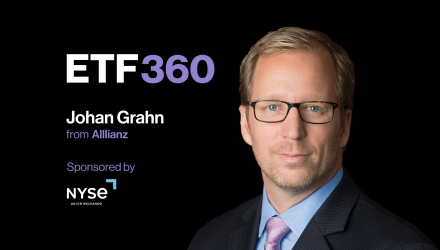In the latest episode of “ETF 360,” VettaFi head of research Todd Rosenbluth spoke to Johan Grahn of Allianz. The two discussed defined outcome ETFs, sometimes known as buffered ETFs.
When the Going Gets Tough, the Tough Get Buffered
Explaining how buffered ETFs work, Grahn outlined that, “In return for a cap on the upside, you get a buffer on the downside. In the case of our ETFs that buffer is either 10% or 20%. It lasts over a twelve-month outcome period.”
Grahn noted that the versatility of the product is what draws attention to it from advisors. With a 20% buffer, if the market was down by 20% or less, investors could end up flat with returns. On the flip side, if the cap is at 13%, then any market rallies over that number won’t be collected.
All Things Seem Possible in May
Allianz just launched its May products – the AllianzIM U.S. Large Cap Buffer10 May ETF (MAYT) and the AllianzIM U.S. Large Cap Buffer20 May ETF (MAYW). The new ETFs have 12-month outcome periods with a 10% and 20% buffer respectively.
MAYT and MAYW give advisors a chance to capture some growth in the events the markets do well while mitigating any downturn. “You can use this to de-risk equity portfolios,” Grahn proffered, sharing use cases for buffered products. He also added that, given the cash sitting on the sideline, “It’s a way to get clients to come back to the markets.” Defined outcome products give investors a safer, more conservative approach that could be useful for clients who have been rattled by 2022’s market or are concerned about a potential recession.
Grahn also noted that Allianz offers its twelve-month products every month, as even has six-month products available as some investors tend to prefer the shorter timelines. “It’s a relatively new space and a lot of advisors are still learning about this,” Grahn said.
For more “ETF 360” videos, visit the ETF 360 Channel.
